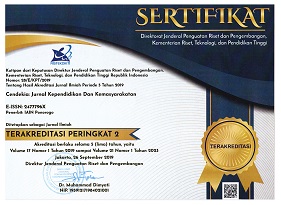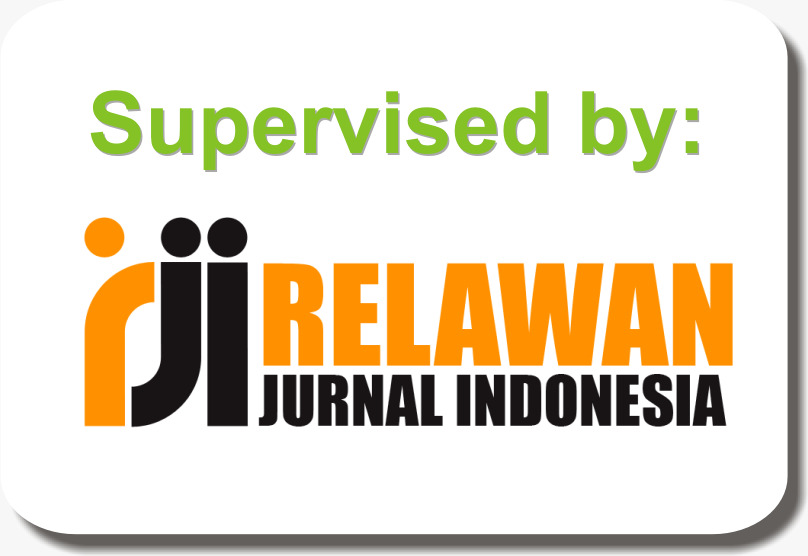The Development of Learning Outcome-Based Islamic Education Materials to Improve The Students Critical Thinking
DOI:
https://doi.org/10.21154/cendekia.v20i2.3963Keywords:
learning outcome, Islamic education, critical thinkingAbstract
This study aims to develop learning outcome-based Islamic education materials in a module for the Islamic education department at IAIN Curup. This study employed a Research and Development method. The data were collected using questionnaires, interviews, observations, and documentation. The data were analyzed in both quantitative and qualitative ways. The analysis of quantitative data deployed percentage formulas, and the qualitative data analysis rested upon an interactive model comprised of data reduction, data display, and conclusion drawing. This study revealed that 89% of lecturers and 94.47% of students perceived that the existing Islamic education materials were less or not appropriate. In addition, all of them perceived those new materials were needed. The subsequent focused group discussion called for the urgency of developing learning outcome-based Islamic education materials in the form of a module. Such a module was further developed. The design consisted of three chapters titled the definition of Islamic Education and Sources of Islamic Education, Islamic Education Curriculum Itself, and Students. The module had 62 pages for the contents and 3 for the bibliography, totaling 65 pages. After being validated by four experts, the module was considered worthy, with a few revisions suggested. The learning outcome-based Islamic education materials are efficient based on the results of practicality tests on one-for-one evaluation (then the second revision) and small group evaluation. Students' critical thinking ability is included in the very high category of test results at intervals of 80-99.
References
Anwar, Bakri. “Pendidikan Islam Melalui Kemahiran Berfikir Membentuk Moral Dan Akhlakul Karimah Pelajar Islam.” Al Daulah : Jurnal Hukum Pidana Dan Ketatanegaraan 5, no. 2 (2016): 341”“51.
Bahri, Muhammad Fajrul, and Supahar. “Kemampuan Berpikir Kritis Menggunakan Tes Terintegrasi Agama Dan Sains Dalam Pembelajaran PAI Di SMA.” Edukasi Islami: Jurnal Pendidikan Islam 8, no. 2 (2019): 233”“51.
Borg, Walter R., and Meredith D. Gall. Educational Research: An Introduction. New York: Longman, 1983.
Creswell, John W. Research Design (Pendekatan Kualitatif, Kuantitatif Dan Mixed). Yogyakarta: Pustaka Pelajar, 2012.
Cunningsworth, Alan. Choosing Your Coursebook. Oxford: Heinemann Publishers Ltd, 1995.
Dick, Walter, Lou Carey, and James O. Carey. The Systematic Design of Instruction. New Jersey: Pearson Education Upper Saddle River, 2009.
Dick, Walter, Carey Lou, and James O Carey. The Systematic Design of Instruction. New Jersey: Pearson Education Upper Saddle River, 2009.
Direktorat Pendidikan Tinggi Keagamaan Islam Direktorat Jenderal Pendidikan Islam Kementerian Agama Republik. Panduan Pengembangan Kurikulum PTKI Mengacu Pada KKNI Dan SN-Dikti. Jakarta: Direktorat Pendidikan Tinggi Keagamaan Islam Direktorat Jenderal Pendidikan Islam Kementerian Agama Republik, 2018.
Gall, Meredith D., Joyce P. Gall, and Walter R. Borg. Educational Research: An Introduction. Boston: Pearson Education, Inc, 2003.
Jolly, D. and Rod Bolitho. A Framework for Materials Writing” Dalam Materials Development in Language Teaching, Ed. Brian Tomlinson. Cambridge: Cambridge University Press, 2011.
Jolly, David, and Rod Bolitho. A Framework for Materials Writing” Dalam Materials Development in Language Teaching, Ed. Brian Tomlinson. Cambridge: Cambridge University Press, 2011.
Kebudayaan, Tim Kurikulum dan Pembelajaran Direktorat Pembelajaran dan Kemahasiswaan Direktorat Jenderal Pendidikan Tinggi Kementerian Pendidikan dan. Buku Kurikulum Pendidikan Tinggi. Jakarta: Direktorat Pembelajaran dan Kemahasiswaan Direktorat Jenderal Pendidikan Tinggi Kementerian Pendidikandan Kebudayaan, 2014.
Rusdi, M. Penelitian Desain Dan Pengembangan Kependidikan (Konsep, Prosedur Dan Sintesis Pengetahuan Baru). Depok: Rajawali Pers, 2018.
Sailah, Illah, Tresna Dermawan Kunaefl, Hendrawan Soetanto, I Made Supartha Utama, SP Mursid, Endrotomo, Sylvi Dewajani, et al. Buku Kurikulum Pendidikan Tinggi. Jakarta: Direktorat Pembelajaran dan Kemahasiswaan Direktorat Jenderal Pendidikan Tinggi Kementerian Pendidikan dan Kebudayaan, 2014.
Sanjaya, Wina. Penelitian Pendidikan: Jenis, Metode Dan Prosedur. Jakarta: Kencana Prenada Media Group, 2013.
Sanusi, Wasilatul Murtafiah, and Edy Suprapto. “Pengembangan Bahan Ajar Berorientasi KKNI Untuk Penguatan Scientific Approach Pada Mata Kuliah Evaluasi Dan Proses Pembelajaran Matematika.” Jurnal Penelitian Pendidikan 8, no. 1 (2017): 1245”“49.
Setyosari, Punaji. Metode Penelitian Pendidikan Dan Pengembangan. Cetakan 1. Jakarta: Kencana, 2010.
Soeharto. “PHYCCTM Development Based on KKNI on Impuls And Momentum Material to Increase HOTS and Independent Character.” EDUCATIO : Journal of Education 2, no. 2 (2017): 265”“72.
Sugiyono. Metode Penelitian Kombinasi (Mixed Methods). Bandung: Alfabeta, 2012.
””””””. Metode Penelitian Kuantitatif, Kualitatif, Dan R&D. Bandung: Alfabeta, 2012.
Sunyoto, Danang. Analisis Regresi Dan Uji Hipotesis. Yogyakarta: Caps, 2011.
Wirda, Mona Adria, Nurmala Berutu, Rosni, and Riki Rahmad. “Developing of The Demography Teaching Book Based on KKNI-Curriculum and High Order Thinking Skills.” Advances in Social Science, Education and Humanities Research (ASSEHR) 208, no. 1st International Conference on Social Sciences and Interdisciplinary Studies (ICSSIS 2018) (2019): 111”“17.
Downloads
Published
Issue
Section
License
Copyright & License
Please find the rights and licenses in Cendekia: Jurnal Kependidikan dan Kemasyarakatan. By submitting the article/manuscript, the author(s) agree with this policy. No specific document sign-off is required.
1. License
The non-commercial use of the article will be governed by the Creative Commons Attribution license as currently displayed on the Creative Commons Attribution-NonCommercial 4.0 International License.
2. Author(s)' Warranties
The author warrants that the article is original, written by the stated author(s), has not been published before, contains no unlawful statements, does not infringe the rights of others, is subject to copyright that is vested exclusively in the author and free of any third party rights, and that any necessary written permissions to quote from other sources have been obtained by the author(s).
3. User/Public Rights
The spirit of Cendekia: Jurnal Kependidikan dan Kemasyarakatan is to disseminate articles published as free as possible. Under the Creative Commons license, Cendekia: Jurnal Kependidikan dan Kemasyarakatan permits users to copy, distribute, display, and perform the work for non-commercial purposes. Users will also need to attribute authors and Cendekia: Jurnal Kependidikan dan Kemasyarakatan on distributing works in the journal and other media of publications. Unless otherwise stated, the authors are public entities as soon as their articles got published.
4. Rights of Authors
Authors retain all their rights to the published works, such as (but not limited to) the following rights;
- Copyright and other proprietary rights relating to the article, such as patent rights,
- The right to use the substance of the article in own future works, including lectures and books,
- The right to reproduce the article for own purposes,
- The right to self-archive the article,
- The right to enter into separate, additional contractual arrangements for the non-exclusive distribution of the article's published version (e.g., post it to an institutional repository or publish it in a book), with an acknowledgment of its initial publication in this journal (Cendekia: Jurnal Kependidikan dan Kemasyarakatan).
5. Co-Authorship
If the article was jointly prepared by more than one author, any author submitting the manuscript warrants that he/she has been authorized by all co-authors to be agreed on this copyright and license notice (agreement) on their behalf and agrees to inform his/her co-authors of the terms of this policy. Cendekia: Jurnal Kependidikan dan Kemasyarakatan will not be held liable for anything arising due to the author(s) internal dispute. Cendekia: Jurnal Kependidikan dan Kemasyarakatan will only communicate with the corresponding author.
6. Royalties
Being an open accessed journal and disseminating articles for free under the Creative Commons license term mentioned, the author(s) are aware that Cendekia: Jurnal Kependidikan dan Kemasyarakatan entitles the author(s) to no royalties or other fees.
7. Miscellaneous
Cendekia: Jurnal Kependidikan dan Kemasyarakatan will publish the article (or have it published) in the journal if the article's editorial process is completed. The editors of Cendekia: Jurnal Kependidikan dan Kemasyarakatan may modify the paper to a style of punctuation, spelling, capitalization, referencing, and usage that deems appropriate. The author acknowledges that the article may be published so that it will be publicly accessible, and such access will be free of charge for the readers, as mentioned in point 3.

















